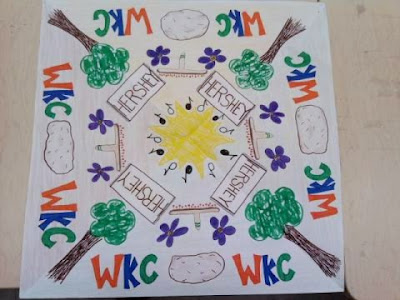While art education provides students with wonderful opportunities for creativity and lessons in life, another large part of art education that will assist them in life is the assessment portion. “The primary purpose of assessment is to determine students' achievement of the Arts expectations; however, this same information can also be used to determine the effectiveness of prograams and teaching methods to enable all students to achieve to the best of their abilities” (Assessment in Visual Arts). While the assessments help the teacher, students learn how to assess other aspects of their lives, other subjects in school and learn the best ways to do this. There are two types of assessments that should be used, summative and formative. Examples that can be used in the classroom are listed below.
There are summative assessments that should be used within the art education program. These types of assessment are used to, “diagnose, revise curricula and determine if objectives have been met” (Clements). For instance, one can give the children a questionnaire to fill out with questions like “what was good about art this year? What did you learn this year about how to make art?, Do you have ideas to make art class better?”(Clements). Another way to use summative assessment is by having the students create portfolios that they turn in at the end of the year. “The portfolio is a great way to illustrate improvement over time” (Assessment). When the student hands in the portfolio, the instructor can then grade all the final products that have been worked on throughout the course. Rubrics are also a good type of summative assessment. In art, often people define art differently. “ The best way to take the subjectivity away is to have a rubric that explains in detail the amount of proficiency there must be for each aspect of the assignment”(Assessment). It works even better if the instructor works to involve the students in creating the rubric so that each of their perspectives on what should be assessed is taken into account.
As for formative assessments, these types of assessments are used to help students throughout the process of creating their art. They should be, “conducted as students form their art pieces and form their thoughts during art discussions” (Clements). A great way to assess student’s interest and skill throughout the different art projects and processes is with the use of a visual journal/sketchbook. “This is a great way for students to reflect on current projects...notes or thoughts can be written or drawn” (Assessment in Visual Arts). By allowing them to have a more private space, the instructor can get a feel as to how the student is doing with certain tasks, feeling about a certain project, especially if they tend to be quiet on the one to one level. These can be assessed with, “a tally sheet showing the regularity or as a means of checking the development of ideas for a project” (Assessment in Visual Arts). One great way to do a formative assessment is through having the students do demonstrations for whatever skill or project is being worked on. As they demonstrate for others, whether the class, or in small groups, the instructor will be able to see their progress on certain skills and lessons (Assessment in Visual Arts). While the above are great ways of assessing the student, the best way is to watch and talk to them about the project they are working on. By having a ‘conference’ with them, the instructor can discuss their self-assessment by asking if, “they are happy with it so far or what do they feel like changing?” As the instructor, they can simply give open ended questions and suggestions that will lead the student to assess their works based on the criteria and help them as they progress with a certain skill or project (Assessment in Visual Arts).
" Incredible @rt Department. Ed. Ken Rohrer. incredibleart.org, 2010. Web. 24 Sept. 2010. <http://www.princetonol.com/groups/iad/links/toolbox/assessment.html>.
"Assessment in the Visual Arts." Art Ed Resources. N.p., n.d. Web. 24 Sept. 2010. <http://home.oise.utoronto.ca/~hinwood/art_assessment.htm>.
It is of special importance that equal ROM ABOE
Clements, Robert D., and Frank Wachowiak. Emphasis Art: A Qualitative Art Program for Elementary and Middle Schools. 9th ed. San Francisco: Allyn & Bacon, 2010. 52-56. Print.









